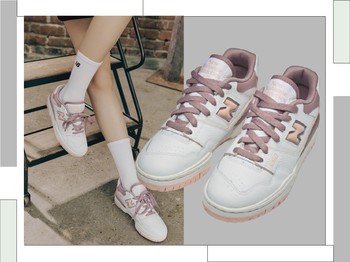Any sneakerhead knows the story of the Nike Pigeon Dunk riots. To most, February 22, 2005 was the tipping point of sneaker culture—a point in time when a once-niche interest was brought to the public eye for the first time. As the story goes, Nike released a limited series of its Dunk silhouette dubbed the "City Pack", with four sneakers representing Tokyo, London, Paris and New York. As the final city of the series, the New York release was designed by Jeff Staple, comprising of three different shades of grey, white, and hits of orange on the outsole and lining. The icing on the cake? A pigeon logo on the lateral heel.
Officially named Nike Dunk SB Low Staple "NYC Pigeon", the sneakers had enthusiasts lining up for them four days before the release date. Only 150 pairs were made, with an allocation of 30 pairs for five shops in New York; Rival, Supreme, Recon, KCDC and Staple's own Reed Space. It is only in Manhattan's Reed Space that the sneakers are numbered, making them more exclusive in nature. After the line exceeded 100 people, the police came to break them up, which is just the start of the riots. Chaos ensued on the day of the release, people got mugged for their pairs—to the point that the police escorted lucky ones who managed to snag a pair—resell prices skyrocketed, and a headline on the New York Post certified the gravity of the situation; "Sneaker Frenzy: Hot Shoe Sparks Ruckus".
Today, the history of sneaker culture can even be divided into pre-Pigeon Dunk era and post-Pigeon Dunk era. As someone who ushered a new era into the culture, however, Jeff Staple's legacy is so much more than the release of these sneakers. The milestones of his career, intertwined with streetwear history, are chronicled in Staple's new book with Rizzoli—aptly titled Jeff Staple: Not Just Sneakers. In his book tour, he stopped by Jakarta at Ageless Galaxy for a signing session while allowing the guests to pick his brain for a bit-after a ride through Jakarta with Gojek, accompanied by Ageless Galaxy co-founder Tamish Aswani.
Most things about the book are coincidental, as Staple didn't have any plans to make a book at first. However, when Hiroshi Fujiwara asked him to write a preface on his book, Hiroshi Fujiwara: Fragment, Rizzoli who found out that the one who wrote the introduction was Staple, then reached out to him to do a book of his own. Knowing that it would be weird for him to create a book about himself by himself, Staple reached out to Emily Suzuki from Hypebeast and Brent Rollins from Complex for creative direction. The process of putting it together took two years, starting in 2019. Without intending to, the book came out in 2022, which is the brand's 25th anniversary.
With his book, what Staple wanted to show the most is that he is not a great artist. He stated that you don't have to be a talented person to get things done. "Literally anybody can do [the things they want] if they just put their heart, mind, and soul into it," said Staple. He then told the story of how he got his start on making t-shirts. During his time studying at Parsons School of Design, he had a silkscreen class in which he was not allowed to print his work on t-shirts, since the preferred medium was paper. "I feel that t-shirts are just a much stronger medium for information. If you live in a city like New York or Jakarta, you see thousands of people everyday, whether on the MRT, a Gojek, or a bus. [In this context] a t-shirt is like the best billboard, it's the best information processing system in my opinion," he said. To get around his class restrictions, his solution was to break into the class at midnight, where he would make screenprinted t-shirts. That was the first inception of Staple, the brand.
On collaborations, Staple believes that what makes a good collaboration is that if one plus one equals three, meaning that the components can create a greater whole than the sum of its parts. What guided him on doing projects and collaborations is his principle of "Four Fs", which stands for friends and family, finance, folio, and fun. Friends and family is obvious, in that you should consider doing a project with them. Finance is also a thing that needs to be considered for your own personal good. Folio is where you consider if the project would look good on your portfolio. Lastly, fun is self-described; would you have fun doing this project? "I personally won't do a project if only one of those Fs is checked off. Two is the bare minimum, three is magical, and four never happens," said Staple with a laugh.
Further, what he believes the value that smaller brands offer in a collaborative project with big brands are the ability to speak to consumers in various subcultures. "I'd like to think that oftentimes, we are like translators. If you're a big brand, you have a huge capital and reach. However, what you can't do really well as a big brand is to infiltrate into communities deep. For example, a big brand can do a nationwide campaign easily—but right now, in downtown New york City, there are six kids hanging out in the corner which this brand has a hard time talking to. Smart brands know that the youth is the future, so it's very important for them to hear what's cool for these kids. So, they need translators like us to find cultural relevancy in certain demographics," expressed Staple. What he attributed the success of a collaboration to is the two-way communication between brands and its targeted audience—in which he and other cultural translator step in.
In what is actually a short session, Staple's breadth of knowledge is communicated in a very concise manner. Of course, more than twenty years of stories cannot be contained in a talkshow session of 45 minutes, but that's where the book came in.
Jeff Staple: Not Just Sneakers is available now via Rizzoli and select distributors.
(alm/tim)


